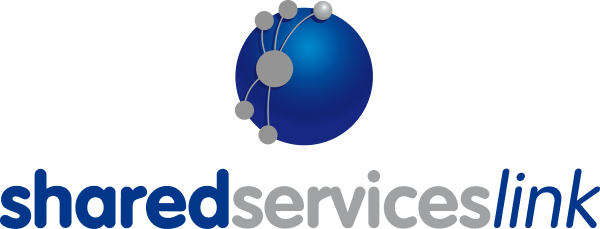Covid-19’s Impact on Shared Services

How you fare in the next few weeks or months may well be testament to how organized, automated and streamlined your SSO has become in the past few years.
Dan Foley, Shared Services Director at the Keir Group, says that if you’ve invested in your shared services for the past few years, this transition shouldn’t be too much of a shock.
The impact so far:
People:
Your Teams:
Delivery centers normally house hundreds if not thousands of team members. All these team members will now be working from home. Operationally, they will have all been set up (they need laptops, monitors for some, desks for others), and then controls would have been put in place to make sure login access to required systems is as seamless as possible.
Shared Services Heads are making sure they have the “right” structure in place with their teams, so teams feel safe and supported, and productivity remains high. Possible structures could be daily 9am check-ins and 4:30pm check-outs on Skype/Zoom/BlueJeans/GoToMeeting, or an afternoon “Tea Break” where your team just meets for a general, non-work 15-minute chat.
Most teams are encouraging flexible hours, given that children are now at home all day in most countries.
As Dan Foley says, “Now is not a time to become a good leader – your team will transition well if you have spent the last number of years proving you’re a strong leader.” Your team’s mental welfare is key. Those team members who live alone will likely feel very shut off. Checking in with the more mentally vulnerable on a regular basis is very important to help keep morale up.
Dan talks about how in Week One (ie the week commencing 23rd March 2020) there is still a novelty factor. He is unsure how morale will be the other side of Easter 2020.
Your Customers:
Your internal customers will appreciate that this will be a challenging transition for the shared services organization. They will want to know how their business unit might be affected, and what “business as usual” looks like moving forward. It’s a great time for one-to-ones with bill payers, as:
- They need to be updated and their confidence inspired
- It’s an opportunity for you to get updates on changed requirements, needs and concerns from their end
- Hearts have softened, so any customer that used to be a “problem” customer for you
- will likely show you more warmth around now, and relationships will inevitably improve.
- You may actually even see your Customer Satisfaction rating increase.
Your Suppliers:
The number one concern for your suppliers right now is cashflow, – being paid on time. The number one concern for shared services organizations regarding suppliers is how high-risk are they (in terms of cashflow and operational delivery). Your teams will need to liaise with all strategic suppliers to make sure they can continue to deliver products and services according to Government Covid-19 requirements (with social distancing, etc). Your finance teams will need to understand which of your suppliers are at risk of insolvency. To help all suppliers, especially the suppliers with revenues of less than $50 million a year, enterprise companies are obliged to see all outstanding invoices are paid on time or early to alleviate any unnecessary financial strain.
Systems:
Many shared services organizations are in the middle of an ERP implementation. These should be able to continue, with training continuing online.
Maintaining older versions of ERPs will be harder, especially those outside the cloud. The more you are “in the cloud” the easier access will be, and chances are users have already had occasion to access systems from home before Covid-19, checking things in the evenings or weekends.
If you are still a manual organization, with, say, suppliers sending paper invoices or calling with payment queries, you may be kicking yourself for not getting going sooner on your planned e-invoicing program. Those who have had a few years to deploy e-invoicing will certainly find the next few months less challenging.
If you are paper-based, now is the time to switch, and fast. Dan is very clear about now being a time of decisive action and avoiding making decisions by committee. We don’t have the time. So if you haven’t already begun your e-invoicing program or your Order-to-Cash automation journey, or your close process is still very manual, now is the time to quickly partner with a Tradeshift, Tungsten, HighRadius, Blackline or Redwood – and automate.
Process:
However good your processes are today, their various levels of straight-through processing will likely take a hit. Securing compliance from a group of disparate people is harder. Global Process Owners everywhere will need to understand how behaviors can be ‘improved’ so processes remain effective. Supporting technology like Signavio and Celonis will help GPOs in their quests to keep users compliant.
Organization:
Checking in with reports, bosses, strategic suppliers and internal customers is key now. Everyone, for the most part, is feeling more open, so relationships might change for the better. We are getting used to seeing boss’s pet dogs walking up staircases behind them on a Zoom call. Dan talked about how productivity might even improve, and this might be a time to see how Virtual Shared Services works. Running a physical center can make up 30% of a shared services cost base. A downsized physical center could certainly have its financial benefits long term. This is also a real test for flexi-hours. Seeing how it affects productivity and morale will be interesting. Of ocurse, you won’t really be able to see how it affects loyalty, as very few will be seeking a new job right now, and employee attrition will likely be its lowest ever.
The UK Government has introduced a scheme where staff can be “furloughed” (this is where the UK Government will pay 80% of a staff member’s salary up to £2500 p.m., but the staff member cannot take on any work for the employer). This initiative has been deployed to negate a spike in companies laying off staff. As a shared services leader, you will need to quickly understand how many of your staff need to be furloughed, whom to furlough, how to communicate this to furloughed and non-furloughed staff, and then how to re-distribute the work.
Data:
You may not have already fully stress-tested your protocols regarding employee access to systems for entering data and maintaining it remotely. Right now your data infrastructure is being properly stressed, and if you haven’t prepared for it, your shared services will likely feel some kind of impact.
Most shared services use SaaS-based solutions, so logins can happen remotely. But some shared services run off fairly outdated systems that have lacked any investment over the years. These shared services will likely be panicking now.
In recent weeks, your rules around accessing systems and data may be more relaxed to get things moving to the new “business as usual.” But now is the time for enhanced controls and monitoring of systems access, users and data updates.
Information and insight are critical now, especially to senior management. This means there will be a greater dependency on AI tools to supply “snap shots” of right now, and predictive modelling for the next 3, 6 and 12 months. Senior management will want visuals regarding low and high risk suppliers and customers, so AI tools with visualization dashboards like Appzen and HighRadius will help provide much-needed information and comfort, and drive fast-paced, sensible decisions.
………………………………………………………………………………………………………….
We will continue to share tips, experiences and stories during this unusual and challenging time. If you would like to be interviewed so you can share the wisdom of your experience with other members, please contact me directly at susie.west@sharedserviceslink.com
